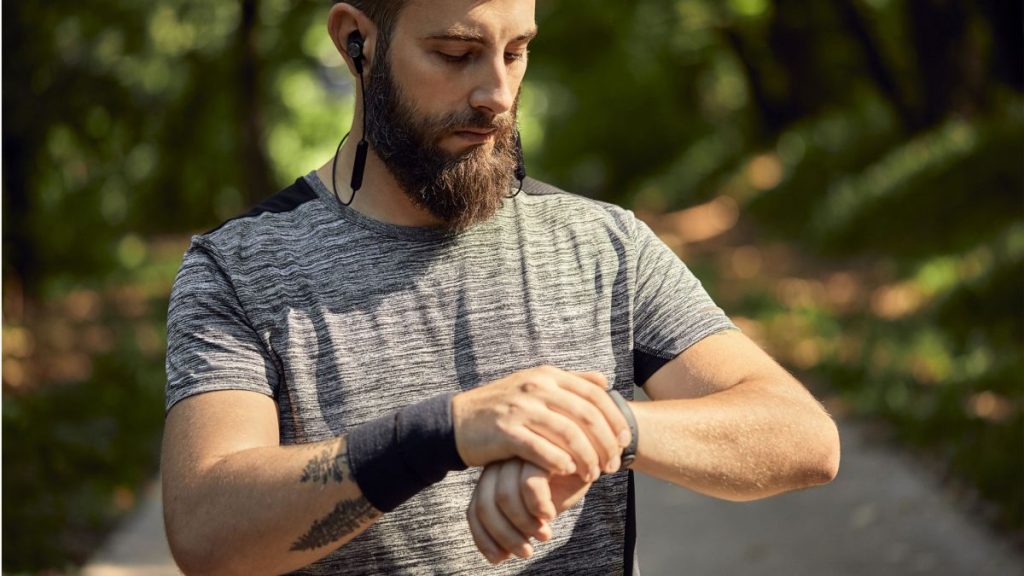Nowadays, the best fitness trackers are equipped with a host of useful features that can track sleep, calculate calories burned, monitor resting heart rate and much more. But at their simplest, they provide an easy way to calculate a person’s daily step count.
Whilst a step tracker is not essential, it can be useful if you are trying to reach a particular goal or incorporate regular movement into your routine.
According to the Department of Health and Human Services (opens in new tab), step counters and other wearable activity monitors combined with behavioral strategies — such as goal-setting and coaching — increase physical activity by providing physical activity feedback directly to the user.
But how do step counters work? And how accurate are they? We asked the experts.
How do step counters work?
A step counter does exactly as the name suggests: it counts a person’s steps by detecting their movement.
Stephen Intille, an associate professor of computer science and health sciences at Northeastern University (opens in new tab) in Boston, told Live Science that the vast majority of step counters use accelerometers — a type of motion sensor.
The accelerometers, which are often strapped to a person’s arm in the form of a watch, look for change in acceleration, said Intille. As a person moves, the acceleration of their body moves.
“If you think about that as a little curve, you are going to get little peaks and valleys every time that you step and go,” Intille said. “That’s your body going back and forth.”
He said that the algorithms inside the step counter look at those peaks and valleys to try to figure out the frequency that they occur.
“After the accelerometer sees some amount of frequency of movement that looks like walking or stepping, it starts to count each of these peaks, which end up being a step.”
(Image credit: Getty)
Step counters differ slightly to fitness trackers or smartwatches. Fitness trackers and smartwatches still give you the option to track your steps, but can usually help you track other kinds of activity, from swimming to dancing and from treadmill running to weight lifting.
“Smart watches or fitness trackers might have different algorithms built into them that are customized for different types of activity,” Intille said.
Are step counters accurate?
A 2020 study in the International Journal of Environmental Research and Public Health (opens in new tab) looked at 11 different fitness trackers, including some “wearables” and some that worked through mobile phone apps. Accuracy varied between the trackers when it came to step counting, but they tended to be better at correctly counting steps during brisk walking, rather than during day-to-day activities and intermittent walking when arm movements were more frequently miscounted as steps.
The tendency of trackers to miscount steps at slower speeds was also noted in a 2020 study in the PeerJ (opens in new tab) journal, which compared a wrist-worn consumer fitness tracker with a “research grade” tracker worn on the ankle. It noted that both were valid in detecting steps at selected walking speeds in healthy adults under controlled conditions. However, both activity trackers miscounted steps at slow walking speeds, and the consumer graded activity tracker also miscounted steps at fast walking speeds.
(Image credit: Getty)
What are the benefits of tracking steps?
Intille believes that tracking steps is popular because it’s “relatively easy to do and gives you some amount of feedback”. The ability to share that feedback with other people can also be entertaining and fun, he said.
A 2017 review published in the journal Sports Medicine (opens in new tab) also concluded that counting steps has a number of other advantages. These include being intuitive and understandable to the layperson, being easy to measure, objective, motivational and helping to facilitate behavior change.
The Physical Activity Guidelines for Americans (opens in new tab) recommend adults engage in 150 minutes to 300 minutes of moderate-intensity exercise or 75 minutes to 150 minutes of vigorous-intensity aerobic activity a week.
The guidelines also acknowledge that while a baseline number of steps per day has varied across studies, the typical amount is about 5,000 steps a day. Popular advice, such as walking 10,000 steps a day, is not a guideline per se, but a way people may choose to meet the guidelines.
Today’s best fitness tracker deals

